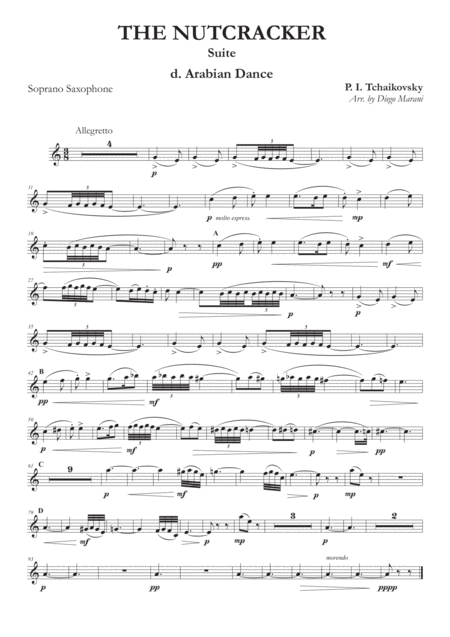Woodwind Ensemble,Woodwind Quartet Alto Saxophone,Baritone Saxophone,Soprano Saxophone,Tenor Saxophone - Level 3 - Digital Download SKU: A0.528362 Composed by P. I. Tchaikovsky. Arranged by Diego Marani. Classical,Concert,Instructional,Romantic Period,Standards. 10 pages. Diego Marani #5800597. Published by Diego Marani (A0.528362). Tchaikovsky made a selection of eight of the numbers from the ballet, forming The Nutcracker Suite, Op. 71a, intended for concert performance. The suite became very popular on the concert stage, and was excerpted in Disney's Fantasia, with everything omitted prior to Sugar Plum Fairies.In this arrangement for sax quartet (Bb Soprano, Eb Alto, Bb Tenor, Eb Baritone) we have the fifth number of the suite: Arabian Dance.
